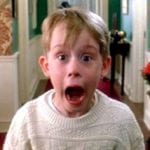 Mysteries
Mysteries  Mysteries
Mysteries  History
History 10 Surprising Stories About the Texas Rangers
 Humans
Humans 10 Philosophers Who Were Driven Mad by Their Own Theories
 Miscellaneous
Miscellaneous 10 Video-Game-Worthy Weapons and Armors from History
 Weird Stuff
Weird Stuff 10 Psychics Who Accurately Predicted Wartime Events
 The Arts
The Arts 10 Pieces of Art Inspired by a Broken Heart
 Health
Health 10 Science Fiction-Sounding New Medical Treatments
 History
History 10 Surprising Facts About the Father of Submarine Warfare
 Space
Space Ten Astonishing New Insights into Alien Worlds
 Weird Stuff
Weird Stuff 10 Bizarre Summer Solstice Rituals Still Practiced Today
 Mysteries
Mysteries Top 10 Haunting Facts About the Ghost Ship MV Alta
 History
History 10 Surprising Stories About the Texas Rangers
 Humans
Humans 10 Philosophers Who Were Driven Mad by Their Own Theories
Who's Behind Listverse?

Jamie Frater
Head Editor
Jamie founded Listverse due to an insatiable desire to share fascinating, obscure, and bizarre facts. He has been a guest speaker on numerous national radio and television stations and is a five time published author.
More About Us Miscellaneous
Miscellaneous 10 Video-Game-Worthy Weapons and Armors from History
 Weird Stuff
Weird Stuff 10 Psychics Who Accurately Predicted Wartime Events
 The Arts
The Arts 10 Pieces of Art Inspired by a Broken Heart
 Health
Health 10 Science Fiction-Sounding New Medical Treatments
 History
History 10 Surprising Facts About the Father of Submarine Warfare
 Space
Space Ten Astonishing New Insights into Alien Worlds
 Weird Stuff
Weird Stuff 10 Bizarre Summer Solstice Rituals Still Practiced Today
10 Bizarre Implications Of Alternate Universes Created By Movies
As we have discussed before, there exists the strong possibility that our universe is not the only one. Indeed, many very smart people believe that there are infinite parallel universes which exist side by side with our own, ones which we cannot see or interact with but are nevertheless just as real.
One of the strangest implications of this theory is that, if true, fictional universes aren’t fictional at all—that there exists in physical reality worlds where our favorite characters are actually real and go about their lives. But what happens when we can’t get their stories straight? Today’s Hollywood, where reboots, remakes, and retellings are all par for the course, could be seriously screwing with the space-time continuum—changing some characters into totally different people, altering the dynamics of entire worlds in weird ways, or even bringing whole worldlines crashing down on a whim.
Note: The views expressed are purely speculation on the part of the author, who has no firsthand knowledge of such things and is absolutely not from another reality.
10 Michael Myers Is At Least Three Totally Different Entities
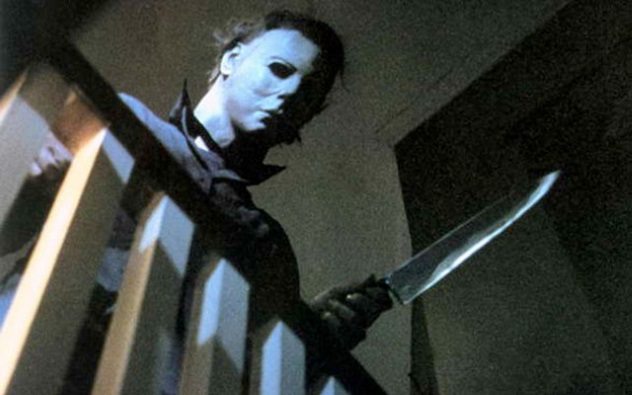
We all know Michael Myers, the mute, Shatner-faced killing machine first brought to life in John Carpenter’s 1978 masterpiece Halloween. But who or what exactly is he? Over the years, the Halloween franchise has broken its own timeline so many times that at this point, there can be no definitive answer.[1] In fact, it’s safe to say that there are at least three different versions of Michael that are completely different entities, with different backstories, motivations, and abilities.
Carpenter has stated that there were never supposed to be any sequels to the first film and that he had envisioned Michael as simply “pure evil,” a terrifying blank slate (famously referred to in the credits only as “The Shape”) with no motivation beyond pure carnage. But the film’s success mandated a sequel, which created the first “alternate” Michael: one driven by an urge to kill protagonist Laurie Strode, revealed to be his sister in the film, and who is simply a garden-variety (if extremely durable) psychopath. Michael quite clearly burns to death at the end of Halloween II, but later sequels retconned his backstory yet again, making him the subject of an ancient druid curse and rendering him literally indestructible unless he is dispatched with a magical knife.
These are obviously three different characters, but 1998’s Halloween H2O: 20 Years Later muddied the waters yet further, ignoring the whole “druid curse” thing and making Michael an ordinary psycho (although one who can apparently survive being incinerated) once again. Is this really the same Michael we saw in Halloween II ? What about the Rob Zombie reboot series? As if all of this isn’t confusing enough, Carpenter has said that next year’s “soft reboot” will ignore all of this and function as a direct sequel to the original film—meaning that the whole idea of Laurie being Michael’s sister may now be retconned away.
Is Michael Myers an immortal engine of death? A wacko with serious sister issues? Or just a “shape” with no purpose but mayhem? The shattered timeline of Halloween dictates that he is all three, and before they’re done with him, he’ll probably also wind up in some universe as a jilted ex-insurance salesman.
9 Two Different Versions Of Spider-Man Are The Only Heroes In Their Worlds
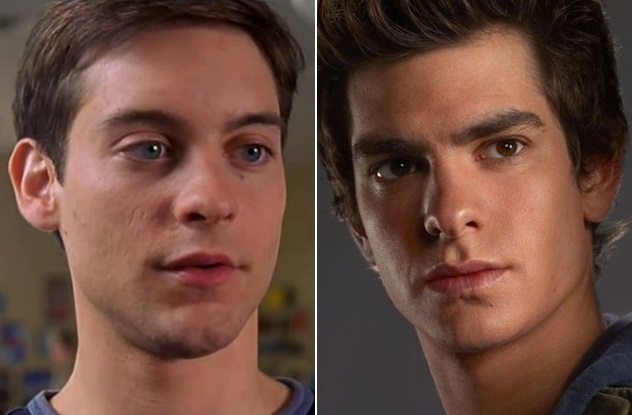
Marvel Comics has a multiverse all its own, with many different versions of its characters inhabiting many different worldlines. Virtually all of these worldlines contain versions of Peter Parker, the spectacular Spider-Man, who always begins his career at a very young age. As such, virtually all of these Spider-Men are defined largely by their interactions with other, more experienced heroes. In the main Marvel continuity, referred to as Earth-616, Spidey opens his career by picking a fight with the entire Fantastic Four in an effort to get them to recruit him. His relationships with heroes such as the Human Torch, Daredevil, and Iron Man have informed the storylines of pretty much every version of the character, up to and including the current cinematic incarnation, who resides in the Marvel Cinematic Universe along with the Avengers and other superpowered allies.
But before Marvel’s deal with Sony allowed Spidey to join his friends in the MCU, we got two versions of Peter from alternate worldlines—the first (portrayed by Tobey Maguire) in Sam Raimi’s Spider-Man series, and the second (portrayed by Andrew Garfield) in the rebooted Amazing Spider-Man films. In stark contrast to nearly every other version of Peter in any universe, these Spider-Men have no such allies. In fact, they are the only superpowered heroes in their worlds, with no mentors or role models to guide their development. It seems that in these two worlds only, for whatever reason, anybody not named Peter Parker who finds themselves gaining superpowers ends up turning to crime. No wonder both of these versions of Peter are so angsty.
8 The Evil Dead Series Tells Two Separate, Nonoverlapping Stories
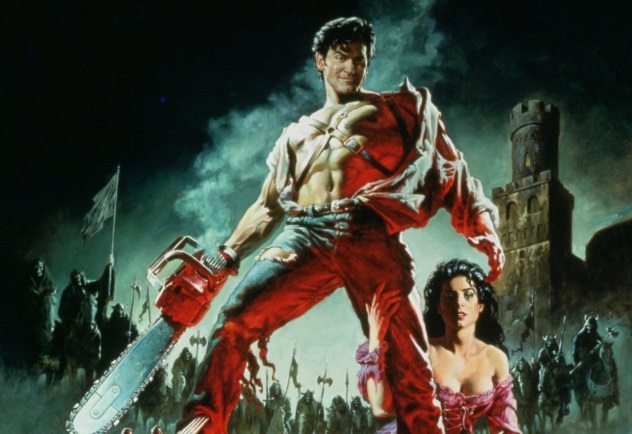
Long before Sam Raimi was stranding Peter Parker all alone in an unforgiving worldline, he was heaping abuse on Ashley J. Williams, the extremely put-upon protagonist of his Evil Dead series. The first film delivered visceral shocks on a shoestring budget, while Evil Dead 2: Dead By Dawn was arguably less of a sequel and more of a higher-budget remake which balanced its gore with a wickedly comedic tone. This tone carried over into the third film, Army of Darkness, which saw Ash jumping back in time to battle “Deadites” in the Middle Ages—but then came the excellent 2013 “remake,” which doesn’t seem to be a remake at all. Instead, it appears to make clear that the entire series is telling two completely different versions of roughly the same story.
The first version of events is told by the original film and the 2013 film, and it goes pretty much like this: Ash and his friends screw around with the Necronomicon at a cabin in the woods, awakening a demonic force, and it goes poorly. (It’s strongly implied at the end of this film that Ash dies, along with everyone else). Some 30 years later, Mia (the protagonist of the “remake”) and her friends spend some quality time at the same cabin, once again provoking rampaging evil spirits, only Mia survives.
The second version is told by the middle two films. Evil Dead 2 simply shows us how the events of the first film played out in an alternate universe where Ash is a wisecracking, nigh-indestructible superhero, one who survives all manner of horrifying injuries, self-amputates his own hand and replaces it with a chainsaw, and is sucked back in time after accidentally opening a world-destroying vortex. None of the crazier or more comedic elements from these films are even hinted at in the others; perhaps Evil Dead 2 and Army of Darkness take place in a worldline where everything plays out like slapstick comedy, even gut-wrenching violence.
7 Logan’s Meddling In Days Of Future Past Fixed Deadpool
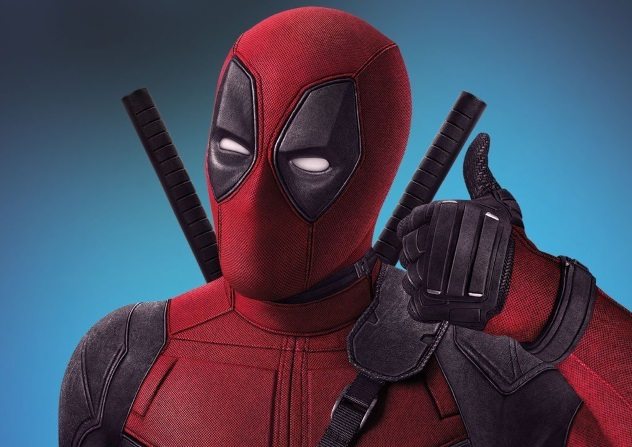
The X-Men film series has, over 17 years and ten films, developed an unbelievably muddled timeline. The series’s tendency to jump back and forth between different time periods, not to mention its habit of including flashbacks and flash-forwards aplenty, has created the kind of continuity problems that already suggested multiple worldlines jostling for control of the overarching narrative—but the problem was compounded severely by 2014’s Days of Future Past, in which Wolverine goes back in time to change an important event that rearranges everything, creating a whole new timeline distinct from the one depicted thus far.[2]
It can be inferred that the events of 2016’s X-Men: Apocalypse and 2017’s Logan were a result of this meddling in the past, but among the many things Wolverine may have screwed up, he also appears to have fixed something. In X-Men Origins: Wolverine (which takes place in the original, pre–Days of Future Past timeline), we are introduced to Wade Wilson—the mercenary comic fans know as Deadpool—in an iteration very different from, and way worse than, his comic book counterpart. The “Merc with a Mouth” ends up with said mouth sewn shut by the end of the film and with the very un-Deadpool-like ability to absorb the powers of other mutants. While the character’s fate is left ambiguous at the movie’s end, fans would mercifully never see this version of the character again.
Apparently, this is because Wolverine did something while mucking about in the past that changed Wade’s entire backstory. The character returned to the X-Men series in 2016’s Deadpool, without explanation, as the Wade Wilson we all know and love: mischievous, vulgar, fully aware that he is a fictional character, and with the full use of his stunningly profane mouth. The fact that both on-screen versions of Deadpool were played by Ryan Reynolds only cements the notion that they are different versions of the same guy and that the butterfly effect is no joke.
6 For Two Versions Of Batman, Superpowers Don’t Exist
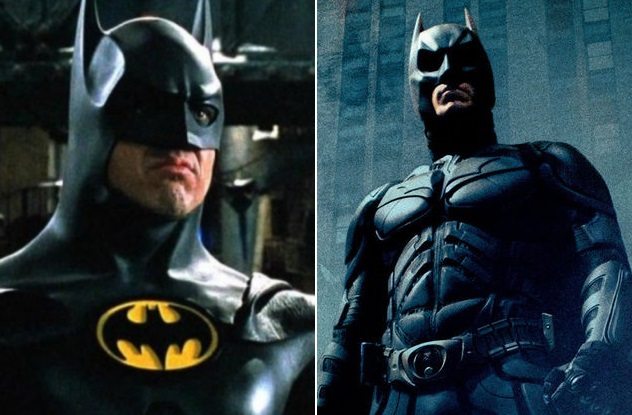
In comic book canon and the films of the DC Extended Universe, much is made of the fact that Bruce Wayne, the Batman, stands alongside superpowered gods like Superman and Wonder Woman despite having no superpowers of his own. He makes up for his lack of powers with rigorous physical training, a vastly superior intellect, and unmatched tactical skills. More than one iteration of Batman has been shown to have a contingency plan for bringing down any superpowered being on his radar, including his own Justice League teammates, should the need arise. It’s part and parcel of what makes Bats one of the greatest superheroes of all time—but for two of the most well-known versions of Bruce, it’s a nonfactor.
The Batmen depicted in Tim Burton’s film series and in Christopher Nolan’s reboot series apparently exist in worlds where there are no such thing as superpowers. There are certainly no other costumed heroes in their worlds, and the villains they encounter—the Riddler, Scarecrow, and two different versions of the Joker—are ordinary, if highly disturbed, men. It makes both of these versions of the Dark Knight seem less like superheroes and more like costumed deviants—but we can be fairly certain that the Batman depicted in Burton’s films is embraced as a hero, because his world’s version of Hollywood keeps making movies about him.
5 Two Batman Films Are Movies From A Fictional Universe
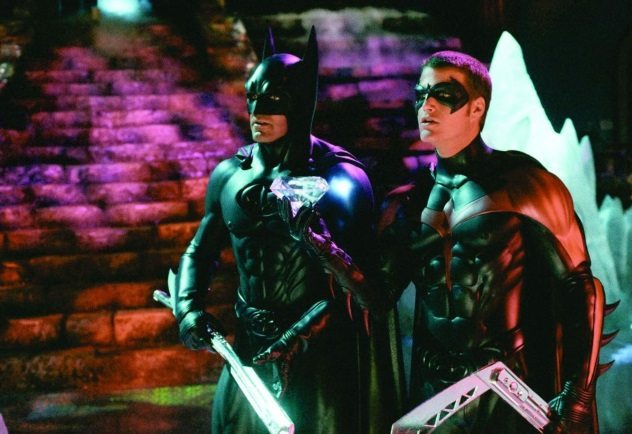
It has been observed by fans and critics that the third and fourth entries in the original Batman film series, for which director Joel Schumacher took over from Burton, are quite different in tone and style from the previous ones. Batman Forever and Batman & Robin began to veer away from Burton’s dark, brooding color palette and gothic tone and ditched any semblance of realism in favor of cartoonish, physics-defying madness and batsuits with nipples, straying so far from what fans expected from the series that Schumacher eventually issued an earnest apology. But according to a virulent fan theory, it wasn’t his fault. Unbeknownst to him, he was only faithfully recreating movies that were released in the universe Burton created, fictionalizing and sensationalizing the exploits of the “real” Batman.[3]
The Schumacher films’ candy-colored aesthetic actually fits in the context of movies designed to be escapism from Burton’s dark, gothic world. Batman’s execution of impossible feats like driving the Batmobile straight up a wall makes much more sense if you keep in mind that these are fictionalized versions of “real” events, and it even becomes clear why Bruce is portrayed by different actors in the later films. They’re conventionally handsome actors, neither of whom look anything like the “real” Bruce Wayne, an awkward guy who looked like Michael Keaton. Revisiting Schumacher’s films with this in mind not only makes them infinitely more watchable, but it makes Schumacher himself seem like a dimension-hopping wizard.
4 Spock Saved The Entire Enterprise Crew From Khan . . . Twice
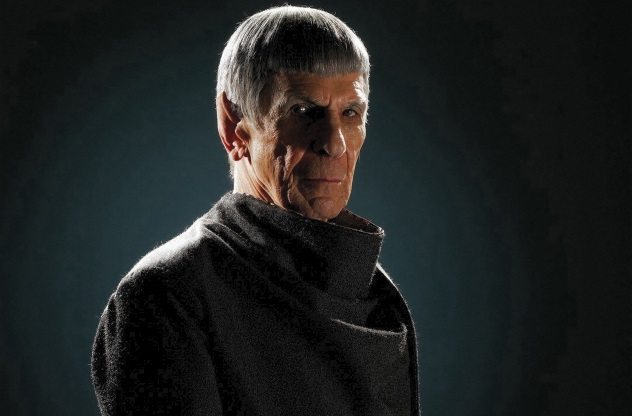
J.J. Abrams’s rebooted Star Trek series is one of the few film series to explicitly play with the idea of alternate worldlines. In 2009’s Star Trek, slightly different but familiar versions of the original Enterprise crew are introduced; it’s made clear that we are watching an alternate timeline version of events when the “original” version of Mr. Spock (called “Spock Prime”) appears and is revealed to have caused a timeline split via time travel.
But things get really strange in 2013’s Star Trek Into Darkness, when the alternate timeline’s Enterprise crew encounters their universe’s version of Khan, a genetically engineered super soldier with a serious vendetta against Kirk. In 1982’s Star Trek II: The Wrath of Khan, Spock Prime—in his original worldline—had gained firsthand experience with Khan’s methods when the madman had attempted to use a terraforming device to destroy a crippled Enterprise. Spock subsequently sacrificed himself by entering a radioactive engine core in order to repair it, enabling the Enterprise to escape. (Of course, his “death” was only temporary.)
During the events of Into Darkness, circumstances force the Enterprise crew into an alliance with their world’s version of Khan against the mad Starfleet Admiral Marcus—an alliance which Spock Prime warns his younger self against, sharing his previous knowledge of Khan Prime’s ruthless tactics. The younger Spock is able to use this knowledge (which, again, he only had because of a time-traveling version of himself from another worldline) to anticipate Khan’s eventual betrayal. Interestingly, in the version of events that follows, Kirk is the one who is forced to “sacrifice himself” by entering the radioactive engine core, which he also ultimately survives.
3 The Terminator Series Broke Time
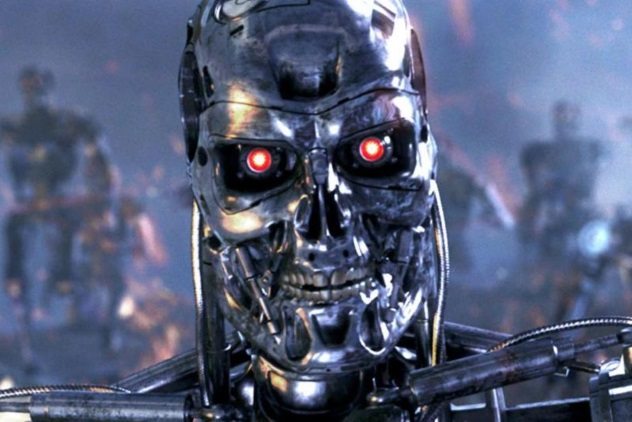
There’s no delicate way to put this: The timeline of the Terminator series was screwed from the moment it became evident that Kyle Reese had traveled back in time to become the father of the guy who sent him, and the problems have only gotten worse with each subsequent film. All of the movies in the series feature time travelers being sent to different times to stop different time travelers from affecting future events, leading to an insanely convoluted mess that requires a flow chart to explain[4] and must comprise dozens of different worldlines tenuously stacked on top of each other like a house of really weird cards.
But there’s only one thing that can happen to a house of cards, and apparently, it did. Series creator James Cameron has recently announced that the forthcoming sixth film will ignore all of the movies that came after 1991’s Terminator 2: Judgment Day, the last movie in the series where the timeline made even a lick of sense. This means that all of those tenuously stacked worldlines don’t exist anymore, because of course they don’t—they’ve all come crashing down. That’s what happens when your solution to every problem is “send back another time traveler.”
2 Hollywood Is Responsible For Freddy Krueger’s Victims
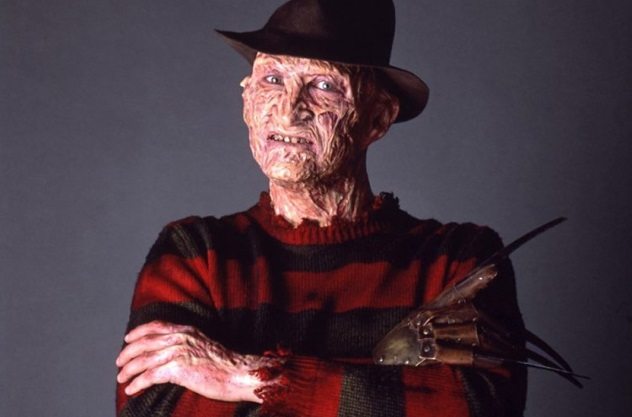
Freddy Krueger’s backstory was slowly revealed over the first five films of the Nightmare on Elm Street series: The “bastard son of a thousand maniacs” was conceived as the result of a gang rape in an insane asylum and grew up to become a child murderer. After being hunted down and burned alive by a group of vengeful parents, he made a deal with the “dream demons” and became something worse—a predator that could stalk the fearful in their dreams. However, the final proper movie in the series, Wes Craven’s New Nightmare, posited that Freddy was in fact something even worse than that.
In the film, former actors in the series portray themselves, and they know the horrible truth: that Freddy was a real entity, captured and held in our reality by the actual Nightmare on Elm Street film series. When the series concluded with 1991’s Freddy’s Dead: The Final Nightmare, the real Freddy was freed, and he began trying to intrude on the “real world.”
By the movie’s end, protagonist Heather Langenkamp (who portrayed Nancy in the series) is able to defeat Freddy and banish him back to his reality—but what of the other inhabitants of that reality? If Freddy can only be corralled within the confines of a successful film series, Hollywood is indirectly allowing his rampage to continue unchecked (in his home reality) by failing to produce one. Sorry, Jackie Earle Haley,[5] but countless gory, surreal murders can be laid directly at your feet.
1 Stan Lee Is A Watcher . . . For Real
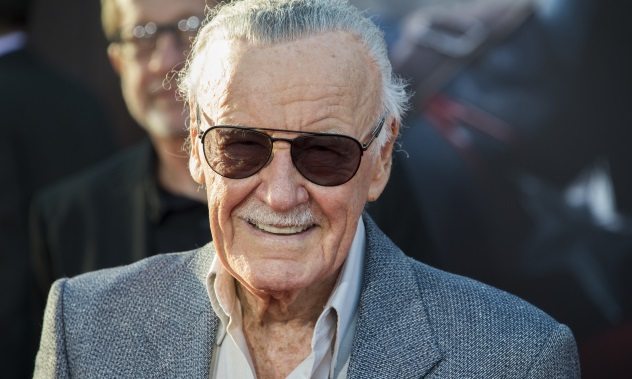
Stan Lee is the king of cameos, having shown up in a different, extraneous role in virtually everything Marvel has ever put to film (and some video games, for good measure). He’s been a mainstay in the Marvel Cinematic Universe since its inception, and fans recently came up with a perfectly mind-blowing reason why this might be, a reason which has actually been confirmed.[6]
Stan’s cameo in 2017’s Guardians of the Galaxy Vol. 2 suggests that he is either one of or closely related to the extradimensional beings known as Watchers, who exist outside of space and time and whose task it is to passively observe all of the events of the multiverse. This is why, whether he’s in the guise of a random bystander, a dead ringer for Hugh Hefner, or a FedEx deliveryman, he’s always right there, wherever the world-threatening action is.
Of course, the multiverse, by definition, includes all possible universes, including our own. It follows that “beloved founder of Marvel Comics” is Stan’s disguise in this universe and that he didn’t exactly create all of these iconic characters and adventures—he’s just telling us all true stories about all of the craziness he’s seen. Excelsior!
For more odd fan theories about your favorite franchises, check out 10 Captivating Fan Theories About Movie Endings And Twists and 10 Crazy But Plausible Fan Theories About Your Favorite Movies.








